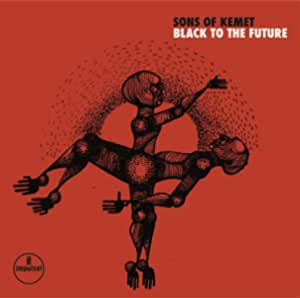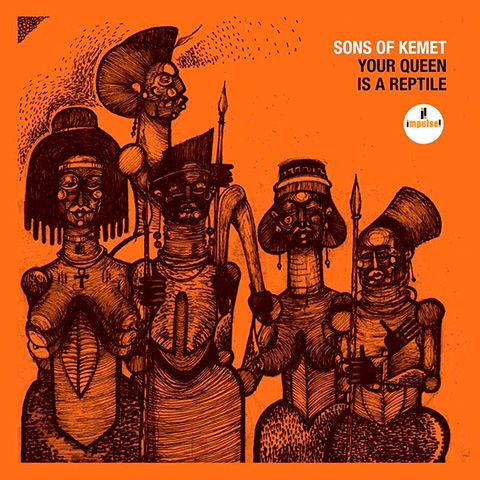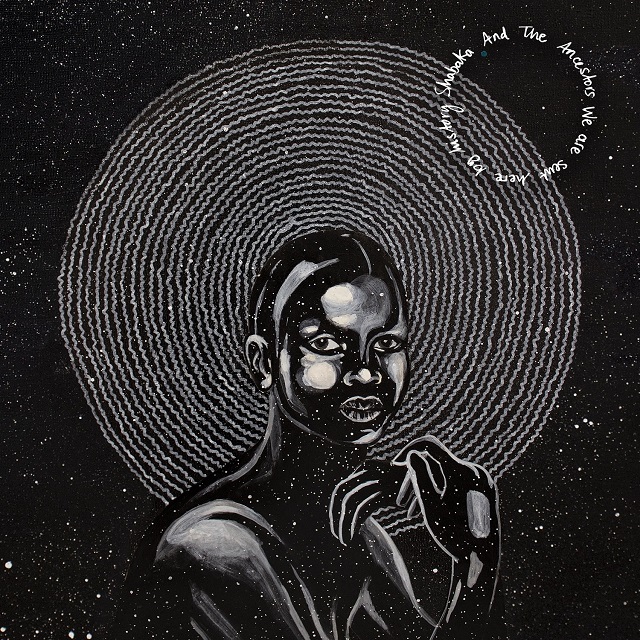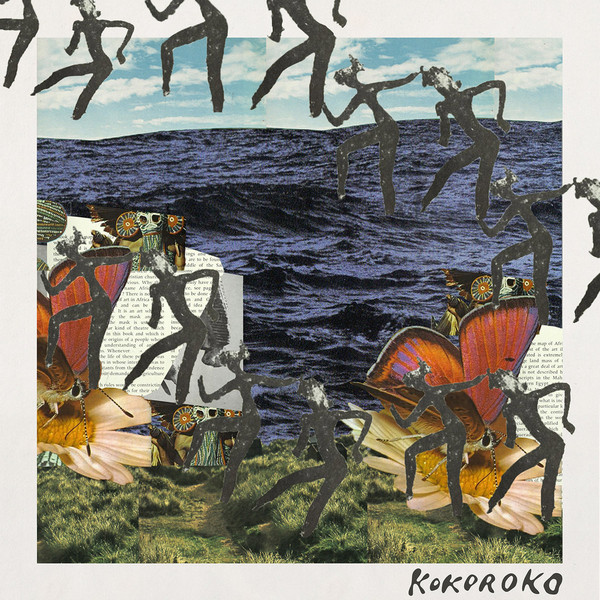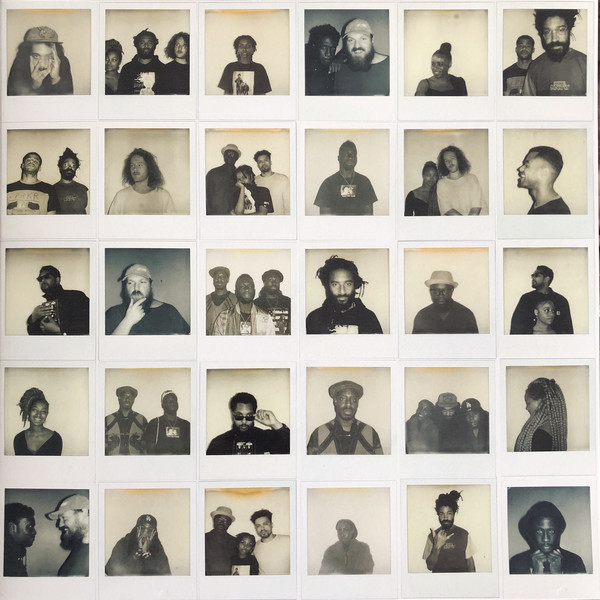MOST READ
- interview with xiexie オルタナティヴ・ロック・バンド、xiexie(シエシエ)が実現する夢物語
- Chip Wickham ──UKジャズ・シーンを支えるひとり、チップ・ウィッカムの日本独自企画盤が登場
- Natalie Beridze - Of Which One Knows | ナタリー・ベリツェ
- 『アンビエントへ、レアグルーヴからの回答』
- interview with Martin Terefe (London Brew) 『ビッチェズ・ブリュー』50周年を祝福するセッション | シャバカ・ハッチングス、ヌバイア・ガルシアら12名による白熱の再解釈
- VINYL GOES AROUND PRESSING ──国内4か所目となるアナログ・レコード・プレス工場が本格稼働、受注・生産を開始
- Loula Yorke - speak, thou vast and venerable head / Loula Yorke - Volta | ルーラ・ヨーク
- interview with Chip Wickham いかにも英国的なモダン・ジャズの労作 | サックス/フルート奏者チップ・ウィッカム、インタヴュー
- interview with salute ハウス・ミュージックはどんどん大きくなる | サルート、インタヴュー
- Kim Gordon and YoshimiO Duo ──キム・ゴードンとYoshimiOによるデュオ・ライヴが実現、山本精一も出演
- Actress - Statik | アクトレス
- Cornelius 30th Anniversary Set - @東京ガーデンシアター
- 小山田米呂
- R.I.P. Damo Suzuki 追悼:ダモ鈴木
- Black Decelerant - Reflections Vol 2: Black Decelerant | ブラック・ディセレラント
- Columns ♯7:雨降りだから(プリンスと)Pファンクでも勉強しよう
- Columns 6月のジャズ Jazz in June 2024
- Terry Riley ——テリー・ライリーの名作「In C」、誕生60年を迎え15年ぶりに演奏
- Mighty Ryeders ──レアグルーヴ史に名高いマイティ・ライダース、オリジナル7インチの発売を記念したTシャツが登場
- Adrian Sherwood presents Dub Sessions 2024 いつまでも見れると思うな、御大ホレス・アンディと偉大なるクリエイション・レベル、エイドリアン・シャーウッドが集結するダブの最強ナイト
Home > Reviews > Album Reviews > Sons Of Kemet- Black To The Future
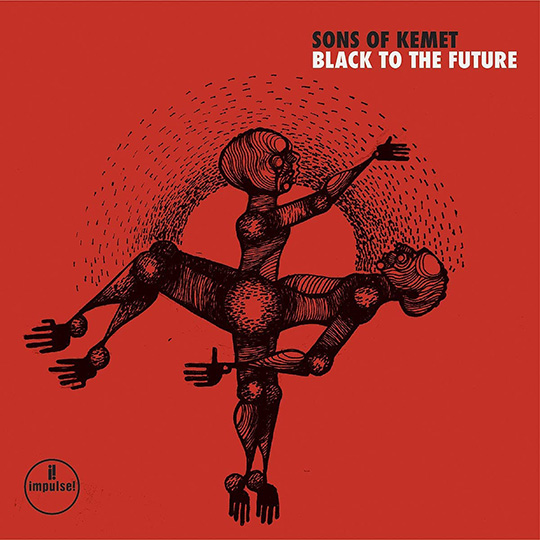
昨年の春に世界中で起こったブラック・ライヴズ・マタ―の抗議活動で、もっとも反響を呼んだ映像のひとつが、イギリスのブリストルで、抗議者たちが17世紀の奴隷貿易商人エドワード・コルストンの像を引き倒し、港へと押して行った光景だった。その行為は一定の政治家から予想通りの非難を受けたが、象徴性は否定できないものだった。数世紀の時を経て、ようやく歴史が大西洋奴隷貿易の立役者たちに追いつこうとしていた。
詩人のジョシュア・アイデヘンが、サンズ・オブ・ケメットの『ブラック・トゥ・ザ・フューチャー』の扇情的なオープニング・トラックである“フィールド・ニーガス”で、「お前の記念碑をゴロゴロ転がして行く タバコを巻くみたいに/肖像は川に投げ込め 火葬の薪の価値もない」、と激しく非難する。低音で鳴くホルンと自由形式のドラミングに乗せて、アイデヘデンはプランテーション奴隷制の時代から現在に至るまで続いている、耐え難い不正を調査し、正義の怒りを燃やしている──いまでも、黒人の人びとは「マラソンで全力疾走」を強いられていると感じることがあるのだ、と。
サンズ・オブ・ケメットのリーダー、シャバカ・ハッチングスは、昨年、ガーディアン紙に「歴史は有限だと思われがちだが、常に探究されるべきものだ」と語った。「同じ過ちをくり返さないために、常に挑戦し、時には点火する必要がある」
これはファイティング・トーク(売り言葉)だ。アイデヘンが“フィールド・ニーガス”を「すべて燃やしてしまえ(Burn it all)」という呼びかけで締めくくり、アルバムの最終曲“ブラック”では、再び苦悩に満ちた訴えをしているが、これは予想されがちな反乱者のサウンドトラックではない。2019年に録音されたセッションをベースとしつつ、ハッチングスがロックダウン中に大幅に手直しをしたサンズ・オブ・ケメットの4作目の本アルバムは、これまででもっとも豊穣で、思索的な作品となっている。ロンドンのジャズ・シーンで最高に熱いライヴ・バンドとしての評判を築いてきたグループではあるが、ここではその炎をやわらげている。
ハッチングスは、木管楽器、テューバにツイン・ドラムという、ブリティッシュ・カリビアンのディアスポラや、ノッティング・ヒル・カーニヴァルのグルーヴに根差した、特徴的なラインナップは崩していない。ドラマーのトム・スキナーとエディ・ヒックが、各曲で入り組んだリズムの土台を作り、それらが常に内省しているかのようなダイアログが続く一方、ハッチングスはダンスホールMCのような強烈さで観客を煽るようなソロを繰り出す。
ハッチングスはまた、昨年のアルバム制作時に、各曲に新たなレイヤーを追加している。みずみずしい木管楽器(クラリネット、フルート、オカリナに少々の尺八まで)のオーバーダビングにより、執拗なリズムとの対比が生まれた。これは、リード・シングル“ハッスル/Hustle”のヴィデオに登場する二人のダンサーによるパ・ド・ドゥの中に見られる、内面の葛藤の二面性を象徴する、プッシュ&プル(押し合い、引き合う)にも似ている。音楽が、“マイ・クイーン・イズ・ハリエット・タブマン”(2018年のアルバム『ユア・クイーン・イズ・ア・レプタイル』からの傑作トラック)や、“(2015年の『我々が何をしにここに来たのかを忘れないために/Lest We Forget What We Came Here To Do』より)のような恍惚とした高みに到達することを約束する、音楽が爆発しそうになるいくつかの瞬間があるが、これは対照的なエレメントの導入により、ムードを変えるためのものだ。
“エンヴィジョン・ユアセルフ・レヴィテーティング” では、ハッチングスの強烈なサクソフォン・ソロがライヴ・ギグの熱気を呼び起こすが、その様子をほろ苦い気分の距離感から眺めているかのような、木管楽器の穏やかさで相殺される。“レット・ザ・サークル・ビー・アンブロークン”の気だるいカリプソの拍子が、終盤ではアート・アンサンブル・オブ・シカゴ風のフリークアウトへと崩れていくと、哀愁を帯びたフルートのリフレインでバランスが保たれる。“イン・リメンブランス・オブ・ゾーズ・フォールン”の緊迫したリズムは、物憂げな短調のメロディーに抑えられているが、ハッチングスは曲が後半になるにつれ、少し熱気を帯びてくるのに抵抗することができない。
このようなコントラストがアルバムを通してのテーマとなっており、とても意外なことに、頭のなかのどこかで、初期のECMがリリースしたベングト・ベルガーの1981年の傑作、『ビター・フューネラル・ビアー/Bitter Funeral Beer』を思い浮かべるような心持ちになった。また、より実践的なスタイルで制作されたこの作品は、特に多数のゲストを起用した前半で、彼らがこれまでに到達したことのないほど、グライム&ベースの音楽になっている。
いくつかのヴォーカル曲でのフィーチャーについては、アイデヘンとコジェイ・ラディカル(“ハッスル”)が傑出している一方、“フォー・ザ・カルチャー”でのD Double Eは、ただトリラリー・バンクスとの”Mxrder Dem”のヴァースの焼き直しをしているらしいのにも関わらず、大いに楽しんでいるように聞こえる。その反面、“ピック・アップ・ユア・バーニング・クロス”にフィーチャーされている恐るべき才能のムーア・マザーとエンジェル・バット・ダヴィドの2人は、強力なラインナップの期待に応えることができてはいないようだ。この曲は、このアルバムでは珍しく、余計な積み荷をしない方がよかったと思われるものではあるが、彼らが一同に会してステージに立ったなら、どれほどのことが成し遂げられるのかは想像できる。
まさに、「すべて燃やしてしまえ(Burn it all)」である。
---

Sons of Kemet
Black to the Future
Impulse!
James Hadfield
One of the most resonant images from the Black Lives Matter protests that erupted across the world last spring was the sight of protestors in Bristol, UK toppling a statue of 17th century slave merchant Edward Colston and pushing it into the harbour. While the act drew a predictable denunciation from certain politicians, the symbolism was impossible to deny. It may have taken a few centuries, but history was finally catching up with the architects of the Atlantic slave trade.
“We are rolling your monuments down the street like tobacco / Tossing your effigies into the river / They weren’t even worth a pyre,” declaims poet Joshua Idehen in “Field Negus,” the incendiary opening track for Sons of Kemet’s “Black to the Future.” Over lowing horns and freeform drumming, Idehen works himself into a righteous fury as he surveys the injustices that have endured from the days of slave plantations to the present – how, even now, Black people can feel like they’re being told “to run sprint times in a marathon.”
“People think that history is finite, but it is something that needs to be explored constantly,” Sons of Kemet leader Shabaka Hutchings told The Guardian last year; “it needs to be challenged and sometimes set alight, so we don’t continue to make the same mistakes.”
That’s fighting talk. But while Idehen signs off “Field Negus” with a call to “burn it all” – and returns to deliver an anguished complaint on the album’s final track, “Black” – this isn’t the insurrectionary soundtrack you might have expected. Based on sessions that were recorded in late 2019 but significantly reworked by Hutchings during lockdown, Sons of Kemet’s fourth album is their richest and most contemplative to date. The group may have built a reputation as one of the most combustible live bands on the London jazz scene, but they’ve tempered the fire here.
Hutchings hasn’t messed with the signature lineup of woodwinds, tuba and twin drummers, rooted in the grooves of the British Caribbean diaspora and London’s Notting Hill Carnival. Drummers Tom Skinner and Eddie Hick create an intricate rhythmic bedrock for each tune that seems to be in constant dialogue with itself, while Hutchings still solos with the crowd-hyping intensity of a dancehall MC.
What’s different is the additional layers that he added to each track while working on the album last year, overdubbing lush woodwind arrangements (clarinets, flutes, ocarinas, even some shakuhachi) that provide a counterpoint to the insistent rhythms. It’s like the push-and-pull captured in the video accompanying lead single “Hustle,”[1] in which a pair of dancers perform a pas de deux symbolising the duality of internal struggle[2] . There are points at which the music seems about to explode, promising to reach the ecstatic heights of “My Queen is Harriet Tubman” (the standout track from 2018’s “Your Queen is a Reptile) or “Afrofuturism” (from 2015’s “Lest We Forget What We Came Here To Do”[3] ), only to introduce a contrasting element that shifts the mood.
On “Envision Yourself Levitating,” Hutchings’ emphatic saxophone solo conjures the heat of a live gig, but it’s offset by gentle woodwinds that seem to be viewing the action from a bittersweet distance. When the languid calypso pulse of “Let The Circle Be Unbroken” collapses into an Art Ensemble of Chicago-style freakout towards the end, it’s balanced out by a mournful flute refrain. The urgent rhythms of “In Remembrance Of Those Fallen” are kept in check by a languid minor-key melody, although Hutchings can’t resist dialling up the heat a little in the song’s latter half.
These contrasts are a running theme throughout the album, taking it into a headspace that reminded me, very unexpectedly, of early ECM releases such as Bengt Berger’s 1981 masterpiece, “Bitter Funeral Beer.” At the same time, the more hands-on production style brings it closer than the group have ever come to grime and bass music, especially during the album’s guest-heavy first half.
Among the various vocal features, Idehen and Kojey Radical (on “Hustle”) are standouts, while D Double E sounds like he’s having a ball on “For The Culture,” even if he’s just rehashing his verse from Trillary Banks’ “Mxrder Dem.”[4] On the other hand, “Pick Up Your Burning Cross,” featuring the formidable talents of both Moor Mother and Angel Bat Dawid, fails to deliver on the promise of its powerhouse lineup. It’s one of the rare moments on the album that might have sounded better without the added baggage, though you can only imagine what these musicians might achieve if they were able to share a stage together. “Burn it all,” indeed.
It’s described in text accompanying the video as “the duality present within any struggle to transcend internal limitations.”
ジェイムズ・ハッドフィールド
ALBUM REVIEWS
- Loula Yorke - speak, thou vast and venerable head/ Loula Yorke - Volta
- Actress - Statik
- Black Decelerant - Reflections Vol 2: Black Decelerant
- High Llamas - Hey Panda
- The Stalin - Fish Inn - 40th Anniversary Edition -
- KRM & KMRU - Disconnect
- Cornelius - Ethereal Essence
- Kronos Quartet & Friends Meet Sun Ra - Outer Spaceways Incorporated
- Martha Skye Murphy - Um
- Mouchoir Étanche - Le Jazz Homme
- Taylor Deupree - Sti.ll
- John Cale - POPtical Illusion
- Amen Dunes - Death Jokes
- A. G. Cook - Britpop
- James Hoff - Shadows Lifted from Invisible Hands


 DOMMUNE
DOMMUNE
